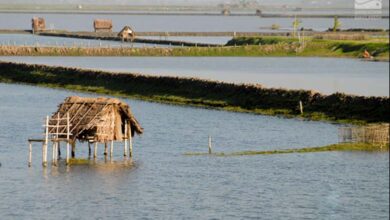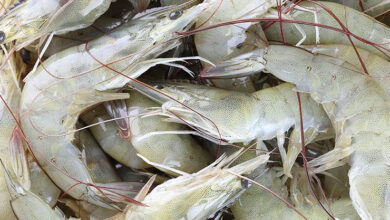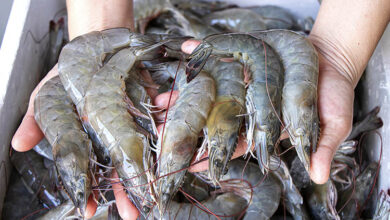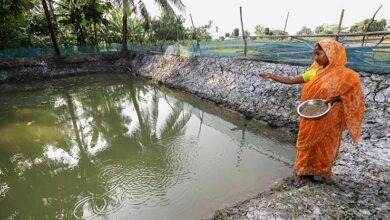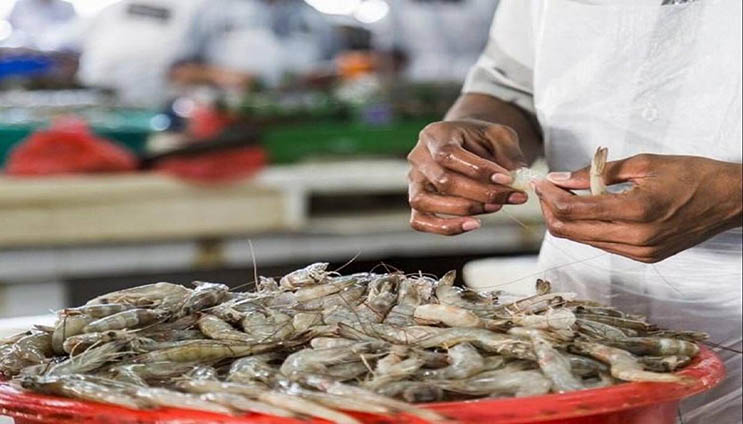
India’s shrimp industry — the world’s largest exporter — is facing one of its toughest challenges in years. The United States, long its biggest buyer, has imposed steep tariffs on shrimp imports from India, throwing the entire supply chain into turmoil. Farmers, processors, and exporters alike are grappling with losses, rising debts, and shrinking markets, while urgently searching for ways to survive.
Tariffs Upend a Dependable Trade Flow
The U.S. recently imposed a 58% tariff on Indian shrimp including anti-dumping and the extra 25%. For an industry where margins are already thin, the move has made Indian shrimp far less competitive in its top export destination.
As a result, shipments have slowed drastically. Exporters report cancelled or postponed orders, while inventories of frozen shrimp pile up in cold storage. Processing plants, which rely on steady exports to keep their lines running, have scaled back operations.
Farmers’ Plight: Falling Prices, Mounting Debts
Shrimp farmers in Andhra Pradesh and other coastal states are among the hardest hit. With exporters cutting back purchases, farm-gate prices have plunged, making it nearly impossible for farmers to cover the cost of feed, pond maintenance, and loans.
Many have warned they may abandon shrimp cultivation altogether. One farmer told U.S. public radio that the situation is “very, very bad” and might force him to stop farming after his next harvest. For smallholders, the combination of low prices and outstanding bank debts is pushing them into financial distress.
Exporters/Processors: Factories and Markets Under Pressure
Exporters — who are also the processors running India’s shrimp factories — face a different but equally damaging crisis. With U.S. demand drying up, their frozen inventories are swelling. To stay liquid, they have cut the price offered to farmers, which in turn worsens the farmers’ position.
Processing plants have slowed production lines, with reports of workers losing hours or shifts. This is particularly devastating for thousands of women who depend on shrimp peeling and packing jobs to support their families.
The U.S. tariff shock has also disrupted shipping schedules, forcing exporters to renegotiate contracts and absorb losses on already shipped consignments.
Coping Strategies: Diversification and Survival Tactics
Despite the disruption, the industry is trying to adapt:
- Shifting Markets: Exporters are gradually redirecting inventories toward Europe, China, and the Middle East, though competition and strict standards remain obstacles.
- Domestic Push: There are growing calls within India to promote shrimp consumption domestically, positioning it as a healthy protein source and a buffer against export volatility.
- Inventory Management: Exporters are working to slowly reduce their frozen stockpiles, even if that means taking losses in the short term.
Farmers, meanwhile, are experimenting with survival strategies. Some are considering switching to other forms of aquaculture, such as fish, which face less export dependency. Others are seeking collective bargaining through local associations to press for government relief.
Outlook: A Supply Chain Under Strain
The tariff war has exposed how vulnerable India’s shrimp industry is to policy shocks in a single key market. Farmers, processors, and exporters are all entangled in the same struggle — one side cannot survive without the other.
For now, the sector is in damage-control mode: exporters are offloading inventories, farmers are hanging on through a poor season, and policymakers are being urged to step in with support. The real test will be whether India can successfully diversify away from overreliance on the U.S. market, and in the process, build a more resilient shrimp supply chain or successful to make a good deal with Trump administration.

